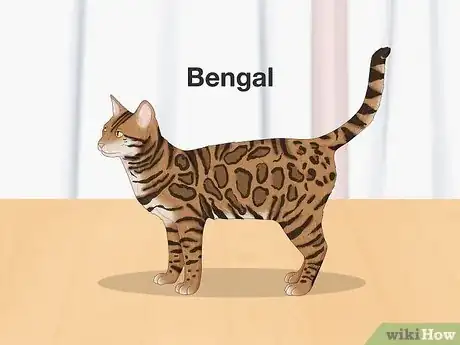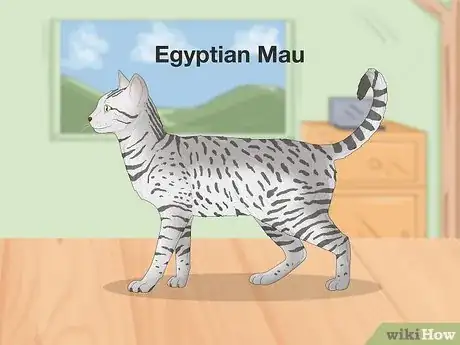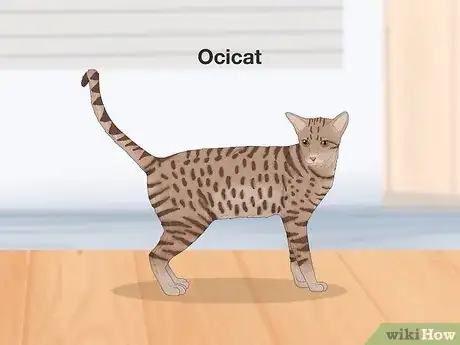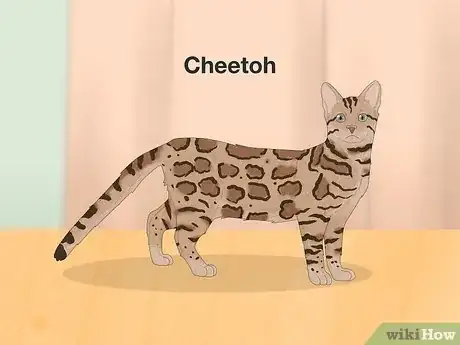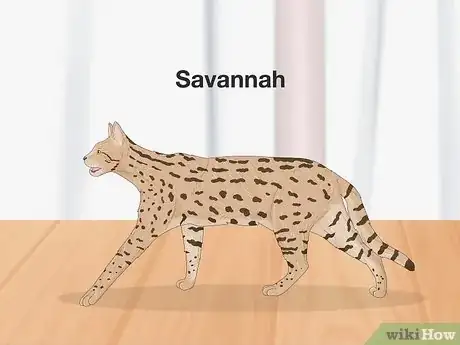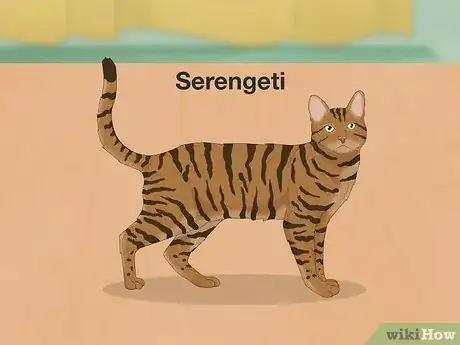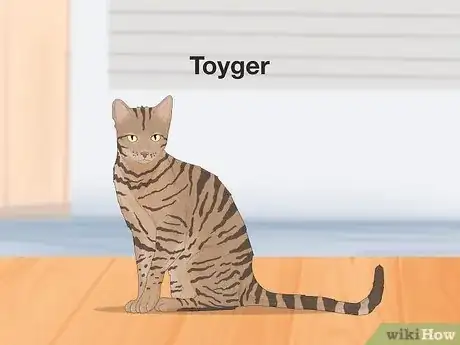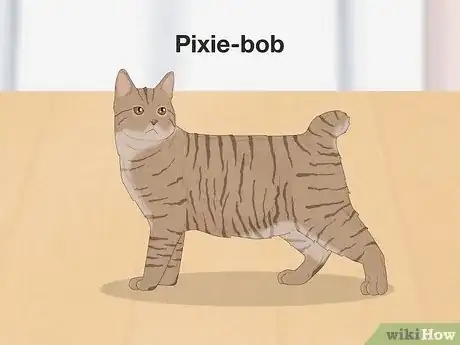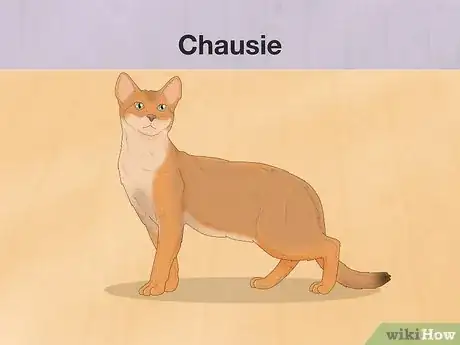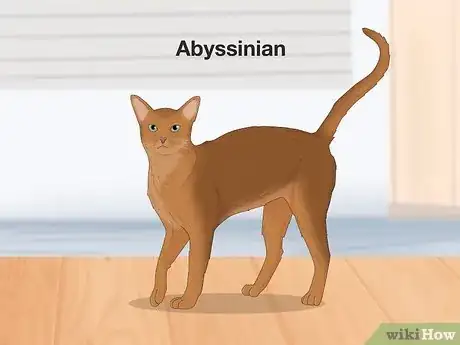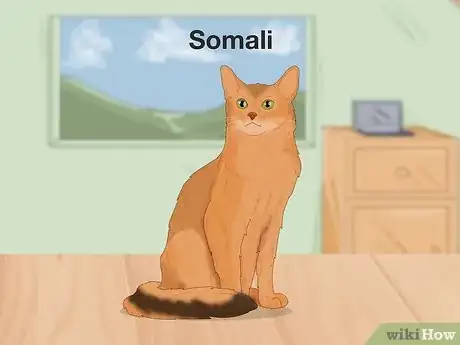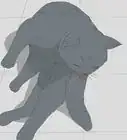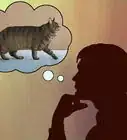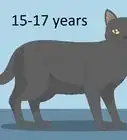This article was co-authored by wikiHow staff writer, Janice Tieperman. Janice is a professional and creative writer who has worked at wikiHow since 2019. With both a B.A. and M.A. in English from East Stroudsburg University, she has a passion for writing a wide variety of content for anyone and everyone. In her free time, you can find her working on a new crochet pattern, listening to true crime podcasts, or tackling a new creative writing project.
There are 21 references cited in this article, which can be found at the bottom of the page.
Learn more...
With their wild spots and rosetta-patterned coats, it’s hard to believe that some cats don’t belong on the cover of National Geographic. Surprisingly though, plenty of domesticated cats bear a striking resemblance to some of nature’s most ferocious felines—and we’re here to show you which ones. Take a deep dive into the world of cat breeds and see if you recognize any of the names on this list.
Things You Should Know
- Bengal cats, Egyptian Maus, Ocicats, Cheetohs, and Serengeti cats all look remarkably similar to leopards and cheetahs.
- Toygers closely resemble tigers with their striped coat.
- Pixie-bobs look a lot like bobcats, and are easily recognizable by their short tail, unique coat, and extra toes.
Steps
Bengal
-
With their iconic leopard spots, it’s easy to mistake this kitty for a wild cat. Like other cats on this list, Bengals are the result of intentional cross-breeding—typically, an Asian Leopard Cat mixed with a cat breed like an American Shorthair, Burmese, Egyptian Mau, or Abyssinian. Full of energy with intelligence to match, Bengals enjoy hopping up onto high surfaces and getting a good look at the world around them.[1] X Research source
- Place of origin: USA
- Average height: 13-16 in (33-40.5 cm)
- Average weight: 8-15 lb (3.5-7 kg)
- Lifespan: 12-16 years
- Temperament: Lively, inquisitive, friendly[2] X Research source
Egyptian Mau
-
Egyptian Maus resemble a wild cat with their distinct, dark-spotted coat. This exotic cat breed has existed for a very long time, and isn’t the direct result of cross-breeding—still, some people believe that this kitty might be connected in some way to the African Wild Cat. Don’t let their leopard-like coloring fool you, though. At heart, the Egyptian Mau is an incredibly sweet and domesticated kitty.[3] X Research source
- Place of origin: Egypt
- Average height: 11-14 in (28-35.5 cm)
- Average weight: 6-14 lb (2.5-6 kg)
- Lifespan: 12-15 years
- Temperament: Loyal, friendly, observant[4] X Research source
Ocicat
-
The leopard-like Ocicat is actually a mix of different cat breeds. When an American cat breeder mated an Abyssinian and Siamese cat together, a kitten with a leopard-print coat appeared in the litter. The Ocicat breed was officially created when this exotic-looking kitty had litters with different domestic cats (like Abyssinians, American Shorthairs, and Siamese cats). Smart, lively, and very vocal, there’s never a dull moment when an Ocicat is around.[5] X Research source
- Place of origin: USA
- Average height: 9-11 in (23-28 cm)
- Average weight: 6-15 lb (2.5-7 kg)
- Lifespan: 12-18 years
- Temperament: Active, friendly, curious[6] X Research source
Cheetoh
-
Nope, we’re not talking about the Cheetos mascot. First bred in the early 2000s, the Cheetoh cat is a cross of the exotic Ocicat and Bengal cat breeds. The result? A friendly, jumbo-sized house cat with a spotted coat that can easily rival any leopard’s or cheetah’s. Despite their large stature, these kitties are happy to chill out and unwind with you while you curl up in front of the TV.
- Place of origin: USA
- Average height: 12-18 in (30.5-46 cm)
- Average weight: 12-25 lb (5.5-11.5 kg)
- Lifespan: 10-15 years
- Temperament: Curious, companionable, lively[7] X Research source
Savannah
-
Believe it or not, this house kitty isn’t a leopard clone. When cat breeders mated a regular domestic cat with an African serval (a wild African cat), the unique, leopard-looking Savannah cat was born—and the cat world was never the same. As energetic as felines come, Savannah cats are always ready for a new adventure, whether that’s splashing around in the bathtub or strolling around the neighborhood with their owner.[8] X Research source
- Place of origin: USA
- Average height: 12-14 in (30.5-35.5 cm)
- Average weight: 15-28 lb (7-12.5 kg)
- Lifespan: 18-20 years
- Temperament: Loving, playful, smart[9] X Research source
Serengeti
-
The wild-looking Serengeti cat is only bred with domestic cats. Breeders often breed litters of Serengeti kitties by crossing Bengals and Oriental Shorthairs. So, it makes sense that this distinctive cat bears the Bengal’s leopard-like coat and the Oriental Shorthair’s large ears. Although this cat looks like they belong in the wild, they want nothing more than to leap around their home and spend quality time with their owners.[10] X Research source
- Place of origin: USA
- Average height: 8-10 in (20-25.5 cm)
- Average weight: 8-15 lb (3.5-7 kg)
- Lifespan: 8-12 years
- Temperament: Extroverted, fun-loving, gentle[11] X Research source
Toyger
-
There’s no mistaking the iconic stripes on this tiger lookalike. During the 1990s, Toygers officially burst into the cat breeding scene with their distinct stripes and rosettes. As wild as their markings look, Toygers are as domestic as can be. With their high intelligence and energy levels, this kitty can be a very active member of any household.[12] X Research source
- Place of origin: USA
- Average height: 8-10 in (20.5-25.5 cm)
- Average weight: 7-15 lb (3-7 kg)
- Lifespan: 12-15 years
- Temperament: Energetic, friendly, smart[13] X Research source
Pixie-bob
-
Believe it or not, the wild-looking pixie-bob isn’t actually a bobcat. Originally bred in the 1980s, this bobcat lookalike is well-known for their unique coat, stubby tail, and extra toes. Energetic and loyal, Pixie-bobs love to spend time with their family, and even enjoy going for walks with their owners.[14] X Research source
- Place of origin: USA & Africa
- Average height: 10-12 in (25.5-30.5 kg)
- Average weight: 8-18 lb (3.5-8 kg)
- Lifespan: 13-16 years
- Temperament: Kind, affectionate, fun-loving[15] X Research source
Chausie
-
The Chausie house cat looks like it belongs in the jungle. While jungle cats were historically domesticated in the days of ancient Egypt, it wasn’t until 1990 when a jungle cat was officially cross-bred with domestic cat. By the mid-1990s, this hybrid—better known as the Chausie cat—was officially established and recognized by The International Cat Association (TICA). Playful, agile, and always on the move, this active kitty is well-suited to a high-energy household.[16] X Research source
- Place of origin: Egypt & South Asia
- Average height: 14-18 in (35.5-45.5 cm)
- Average weight: 12-25 lb (5.5-11.5 kg)
- Lifespan: 10-15 years
- Temperament: Active, smart, friendly[17] X Research source
Abyssinian
-
The popular Abyssinian cat definitely has some exotic characteristics. Originally from Egypt and Ethiopia, the Abyssinian cat found its way to North America in the early 20th century. By the 1930s, these wild-looking kitties started making a name for themselves; now, they’re one of the most popular and beloved breeds around. Like many other cats, the curious, agile, and devoted Abyssinian could be a great companion for any cat lover.[18] X Research source
- Place of origin: Africa
- Average height: 8-10 in (20.5-25.5 cm)
- Average weight: 8-12 lb (3.5-5.5 kg)
- Lifespan: 9-13 years
- Temperament: Fun-loving, energetic, smart[19] X Research source
Somali
-
The long-haired Somali looks like it could fit in well in the wild. The cat breeding community isn’t totally sure where these kitties came from, but they’re assumed to be a long-haired spin-off of Abyssinian cats. Fully domesticated, this inquisitive and playful cat is a fun and mischievous companion to have around the home.[20] X Research source
- Place of origin: USA
- Average height: 8-10 in (20.5-25.5 cm)
- Average weight: 8-12 lb (3.5-5.5 kg)
- Lifespan: 11-12 years
- Temperament: Extroverted, curious, outgoing[21] X Research source
You Might Also Like
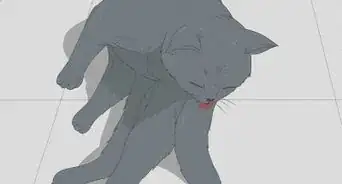 How to Spot a Russian Blue Cat: An Easy Step-By-Step Guide
How to Spot a Russian Blue Cat: An Easy Step-By-Step Guide
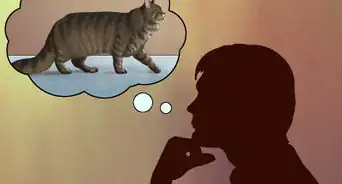
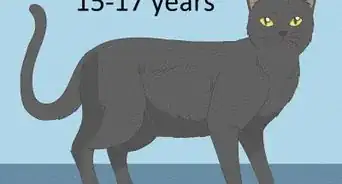 Easy Ways to Tell If a Cat Is a Bombay (Plus How to Care for One)
Easy Ways to Tell If a Cat Is a Bombay (Plus How to Care for One)
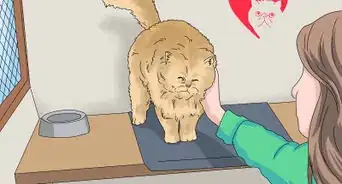
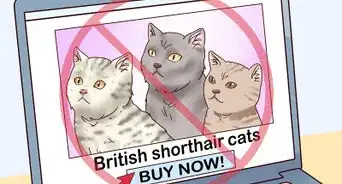
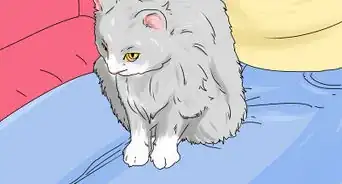
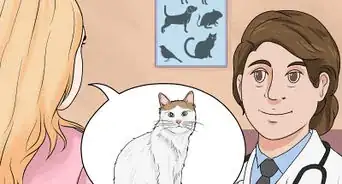
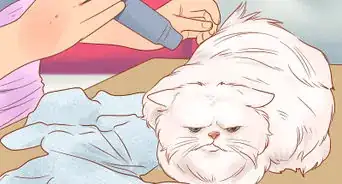
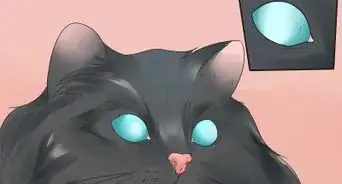
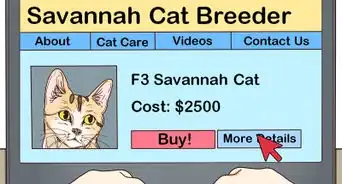

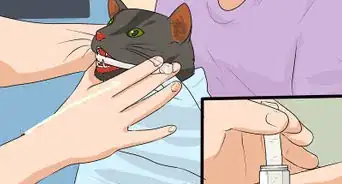


References
- ↑ https://vcahospitals.com/know-your-pet/cat-breeds/bengal
- ↑ https://www.aspcapetinsurance.com/resources/bengal-cat-facts/
- ↑ https://vcahospitals.com/know-your-pet/cat-breeds/egyptian-mau
- ↑ https://cats.com/cat-breeds/egyptian-mau
- ↑ https://vcahospitals.com/know-your-pet/cat-breeds/ocicat
- ↑ https://cats.com/cat-breeds/ocicat
- ↑ https://cats.com/cat-breeds/cheetoh
- ↑ https://savannahcatassociation.org/
- ↑ https://cats.com/cat-breeds/savannah
- ↑ https://www.tica.org/breeds/browse-all-breeds?view=article&id=892:serengeti-breed&catid=79
- ↑ https://cats.com/cat-breeds/serengeti-cat
- ↑ https://tica.org/breeds/browse-all-breeds?view=article&id=885:toyger-breed&catid=79
- ↑ https://cats.com/cat-breeds/toyger
- ↑ https://www.tica.org/breeds/browse-all-breeds?view=article&id=866:pixiebob-breed&catid=79
- ↑ https://cats.com/cat-breeds/pixie-bob
- ↑ https://www.tica.org/breeds/browse-all-breeds?view=article&id=1815
- ↑ https://cats.com/cat-breeds/chausie
- ↑ https://vcahospitals.com/know-your-pet/cat-breeds/abyssinian
- ↑ https://cats.com/cat-breeds/abyssinian
- ↑ https://vcahospitals.com/know-your-pet/cat-breeds/somali
- ↑ https://cats.com/cat-breeds/somali
About This Article

